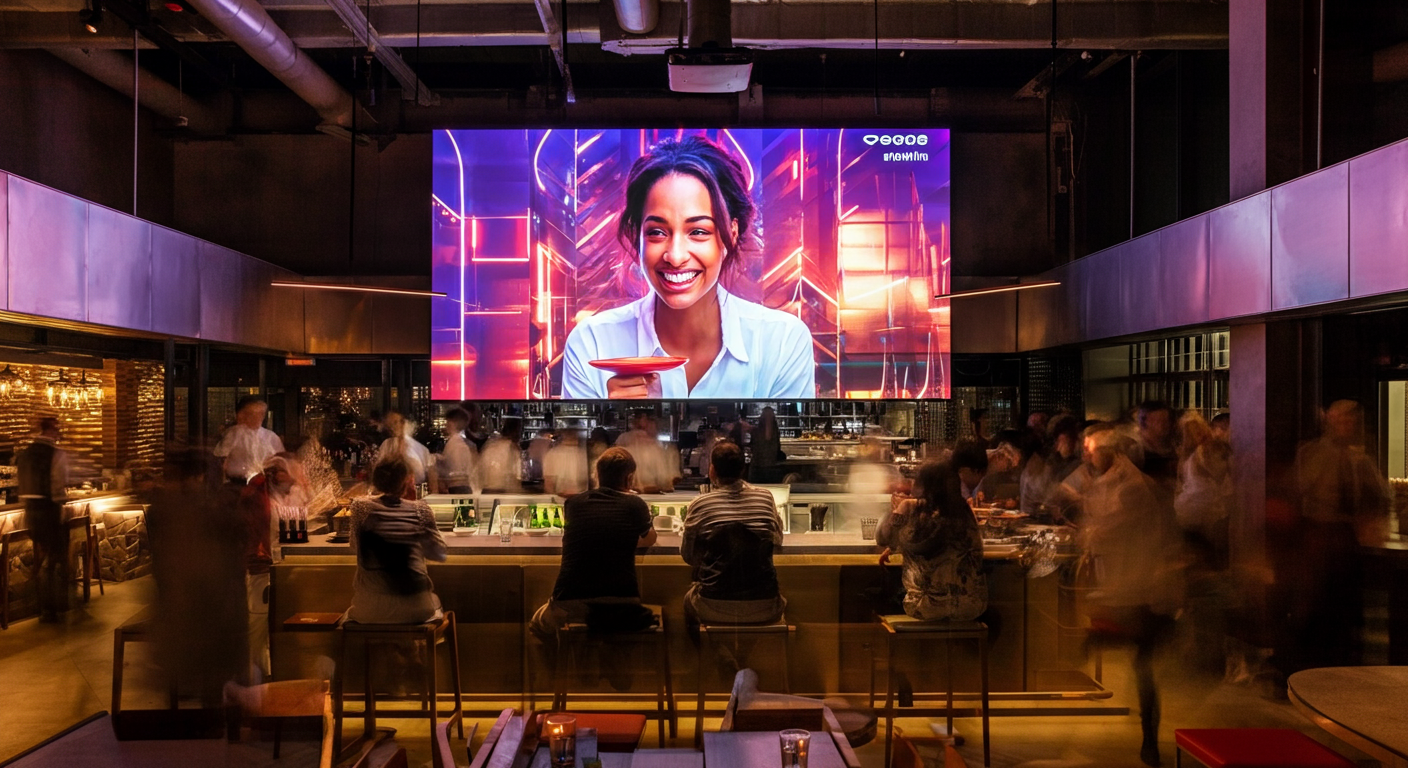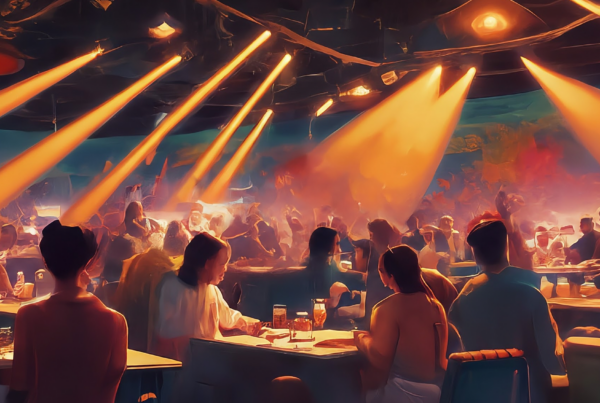In today’s fast-paced world, businesses with multiple locations face unique challenges in providing a consistent and engaging customer experience. Imagine a bustling restaurant chain with outlets in different cities, each striving to offer the same vibrant atmosphere to its patrons. This is where the concept of centralized entertainment for multi-location businesses becomes a game-changer. By implementing centralized solutions, businesses can streamline their entertainment offerings, ensuring a uniform and high-quality experience across all locations.
For businesses in the hospitality and entertainment industries, such as casinos, restaurants, and bars, the ability to deliver a cohesive entertainment experience is crucial. Not only does it enhance customer satisfaction, but it also boosts operational efficiency by reducing the complexity of managing diverse entertainment setups. As we explore the myriad benefits of centralized entertainment systems, it’s clear that they hold the key to transforming how multi-location businesses operate.
At DLM Media, we specialize in providing commercial video programming solutions tailored to meet the needs of multi-location businesses. Our expertise in delivering reliable and high-quality content ensures that your customers can always enjoy their favorite programming without hassle. In this blog post, we will delve into the advantages of adopting centralized entertainment solutions, discuss best practices for implementation in 2024, and showcase how these systems can revolutionize the customer experience.
Join us as we explore the future of entertainment in multi-location businesses and uncover why centralized solutions are not just a trend but a necessity. Stay tuned as we guide you through the practical steps to enhance your customer experience and operational efficiency through streamlined entertainment solutions.
Understanding Centralized Entertainment Systems
In the realm of multi-location businesses, maintaining a consistent entertainment experience across various sites is crucial. Centralized entertainment systems offer a solution by providing a single control point to manage entertainment content and settings. These systems streamline operations, ensuring uniformity and enhancing customer satisfaction.
Centralized systems are particularly beneficial for businesses like restaurants, casinos, and bars, where the atmosphere plays a significant role in attracting and retaining customers. By leveraging a centralized approach, businesses can efficiently manage their entertainment offerings, reducing the complexity and cost associated with managing multiple setups.
Components of Centralized Entertainment Systems
A centralized entertainment system typically comprises several key components:
- Central Control Hub: This is the core of the system, allowing operators to manage content distribution and settings across all locations from a single interface.
- Content Management Software: This software enables the scheduling, updating, and customization of entertainment content to suit different locations and times.
- Network Infrastructure: A robust network is essential to ensure seamless content delivery and system communication across all sites.
- Display Devices: These include screens and audio systems installed at each location, configured to receive and display content from the central hub.
These components work together to create a cohesive entertainment experience, streamlining operations and improving customer engagement.
Functionality in Multi-Location Businesses
Centralized entertainment systems function by utilizing a centralized server or cloud-based platform to distribute content to various locations. This setup allows businesses to:
- Maintain Consistency: Ensure that each location offers the same high-quality entertainment experience, enhancing brand identity.
- Reduce Operational Costs: Minimize the need for separate management teams at each site, cutting down on labor and equipment expenses.
- Adapt Quickly: Easily update content or adjust settings across all locations in response to customer feedback or market trends.
For example, a restaurant chain can use a centralized system to broadcast the same sports event across all its locations, ensuring every customer enjoys the same experience.
Advantages of Centralized Control
Having a single control point for managing entertainment offers several advantages:
- Efficiency: Streamlines processes by reducing the need for manual adjustments at each location.
- Scalability: Easily expand or modify the system as the business grows or changes.
- Data-Driven Decisions: Collect and analyze data from all locations to make informed decisions about content and customer preferences.
Statistics show that businesses implementing centralized systems can achieve up to a 30% reduction in operational costs, while also improving customer satisfaction scores. By centralizing control, businesses can focus on delivering an exceptional entertainment experience, ultimately driving customer loyalty and revenue growth.
Enhancing Customer Experience with Centralized Entertainment
In the competitive world of hospitality and entertainment, delivering a consistent and engaging customer experience is paramount. Centralized entertainment systems offer a solution by ensuring that every location of a multi-site business provides the same high-quality content, enhancing customer satisfaction and loyalty. By centralizing control, businesses can streamline their entertainment offerings, providing a seamless experience that resonates with customers.
Centralized entertainment is particularly beneficial for businesses like restaurants, casinos, and bars, where ambiance significantly impacts customer satisfaction. A centralized system ensures that each location maintains the same atmosphere, reinforcing brand identity and customer expectations. This uniformity not only enhances the customer experience but also simplifies management, reducing the need for separate setups at each site.
Consistency Across Locations
One of the key advantages of centralized entertainment systems is the ability to maintain consistency across all business locations. Customers visiting different branches of a restaurant chain, for example, can expect the same music, visuals, and ambiance, which strengthens brand loyalty. This consistency is achieved by using a central control hub to manage content distribution, ensuring that every location receives the same high-quality entertainment.
Businesses like Soundsuit have successfully implemented centralized systems to deliver consistent music experiences across multiple sites. By using a centralized dashboard, they can create brand-specific music playlists and distribute them to various locations, ensuring a cohesive customer experience. This approach not only enhances customer satisfaction but also streamlines operations, making it easier to manage entertainment across numerous sites.
Improved Customer Engagement
Centralized entertainment systems also play a crucial role in enhancing customer engagement. By offering personalized and interactive content, businesses can create a more immersive experience for their customers. For instance, a casino can use centralized systems to display live sports events or interactive games, keeping customers entertained and engaged.
Customer testimonials highlight the positive impact of centralized entertainment on engagement. For example, patrons at a chain of sports bars reported increased enjoyment due to the consistent availability of live sports events and interactive entertainment options. This increased engagement translates to longer customer stays and higher spending, benefiting the business’s bottom line.
Case Studies and Success Stories
Several businesses have successfully enhanced their customer experience through centralized entertainment systems. A notable example is a restaurant chain that implemented a centralized video programming solution to deliver consistent sports and music content across all its locations. This approach not only improved customer satisfaction but also increased foot traffic and repeat visits.
Another success story comes from a casino that utilized centralized systems to offer a unified gaming and entertainment experience. By providing consistent content and interactive options, the casino saw a significant boost in customer engagement and satisfaction, leading to increased revenue.
These examples demonstrate the transformative power of centralized entertainment systems in enhancing customer experience. By providing consistent, high-quality content, businesses can create a memorable and engaging atmosphere that keeps customers coming back.
Implementing Centralized Entertainment Solutions
Implementing centralized entertainment solutions in multi-location businesses can revolutionize the way you deliver content to your customers. By centralizing control, businesses can streamline operations, reduce costs, and enhance the overall customer experience. This section will guide you through the process of implementing these systems, from initial planning to ongoing management.
Centralized entertainment systems offer a unified approach to managing content across various locations, ensuring consistency and quality. For businesses in the hospitality and entertainment sectors, such as casinos, restaurants, and bars, this approach can significantly improve operational efficiency and customer satisfaction. Let’s explore the steps involved in successfully implementing a centralized entertainment solution.
Planning and Strategy Development
The first step in implementing a centralized entertainment system is developing a comprehensive plan and strategy. Begin by assessing your current entertainment setup and identifying areas for improvement. Consider the specific needs of your business and the preferences of your target audience. This assessment will help you determine the type of content and features your centralized system should include.
Next, set clear objectives for your centralized entertainment solution. These objectives may include enhancing customer engagement, reducing operational costs, or improving content consistency across locations. By establishing clear goals, you can measure the success of your implementation and make necessary adjustments along the way.
Choosing the Right Technology and Partners
Once you have a clear plan, the next step is selecting the right technology and partners to support your centralized entertainment solution. Look for providers that offer reliable and scalable systems tailored to your business needs. Consider factors such as ease of use, integration capabilities, and customer support when evaluating potential partners.
It’s also essential to choose technology that can adapt to your existing infrastructure. This adaptability will ensure a smooth transition and minimize disruptions during implementation. Additionally, consider partnering with a company like DLM Media, which specializes in commercial video programming solutions for multi-location businesses.
Implementation and Training
With the right technology and partners in place, you can begin the implementation process. Start by setting up the central control hub and configuring the content management software. Ensure that the network infrastructure is robust enough to support seamless content delivery across all locations.
Training is a crucial component of successful implementation. Provide comprehensive training for your staff to ensure they understand how to use the new system effectively. This training should cover content management, troubleshooting, and any specific features of your centralized entertainment solution.
By following these steps, businesses can successfully implement a centralized entertainment system that enhances customer experience and streamlines operations. As you move forward, continue to monitor the system’s performance and make necessary adjustments to ensure it meets your objectives.
Maximizing Business Success with Centralized Entertainment
As we navigate the dynamic landscape of multi-location businesses, the importance of centralized entertainment solutions becomes increasingly evident. These systems not only streamline operations but also offer a uniform and engaging customer experience across all locations. By centralizing entertainment, businesses can ensure consistency, enhance customer satisfaction, and ultimately drive growth.
Centralized entertainment systems bring several key benefits that businesses cannot afford to overlook. They reduce operational complexity, lower costs, and enable quick adaptation to changing market demands. With a central control hub, businesses can manage content distribution, update settings, and analyze data from all locations, leading to more informed decision-making and a cohesive brand identity.
- Consistency: Deliver the same high-quality entertainment experience at every location.
- Efficiency: Reduce the need for separate management teams and streamline processes.
- Scalability: Easily expand and adapt as your business grows.
For businesses eager to embrace these benefits, partnering with experts like DLM Media can provide tailored solutions to meet specific needs. As a leader in commercial video programming, DLM Media ensures reliable signal delivery and exceptional customer service, making the transition to centralized entertainment seamless and effective.
Now is the time to transform your business with centralized entertainment solutions. Visit DLM Media to explore how their innovative offerings can enhance your customer experience and operational efficiency. By adopting these solutions, you are not just keeping up with industry trends but setting the standard for excellence in multi-location businesses. Let centralized entertainment be the key to unlocking your business’s full potential.





